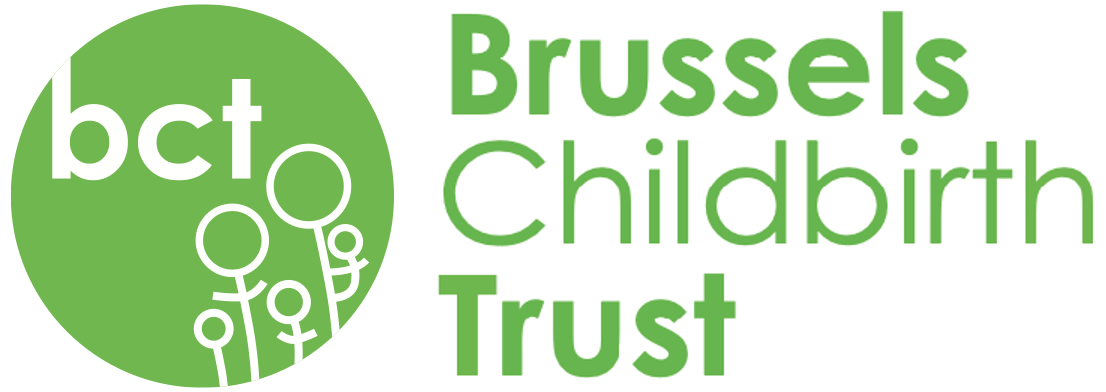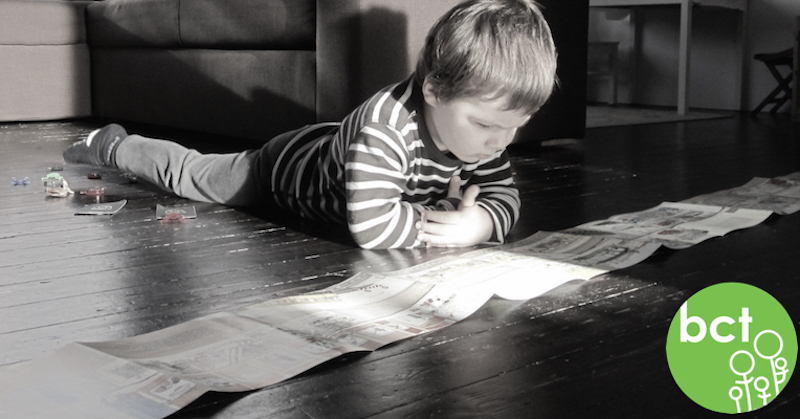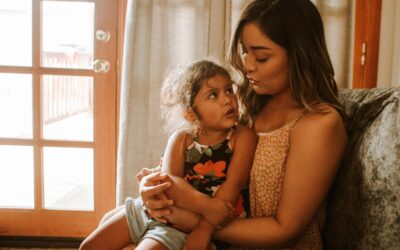Raising children with several languages is a chance and challenge for parents. Our world has become multilingual, and we are ourselves global citizens used to working and socialising in several languages. Letting our children learn languages at an early age is a wonderful opportunity for them, which opens many doors during their childhood and adult life. However, many of us, and especially those who did not grow up with several languages, do wonder how exactly we should raise our multilingual kids. What is the best way to introduce one or more additional languages, and will our children have linguistic delays and struggles?
Being multilingual has many benefits
Speech experts reassure parents that children are very capable of learning more than one language, either simultaneously or sequentially. Worldwide, it is estimated that there are as many bilingual as there are monolingual children (1) and that there are more second language speakers of English than native speakers (2). In many cultures around the world, like in Asia or Africa, it has been common for decades for children to grow up with more than one language. Sometimes learning several languages is a necessity for a child, as a child may have to speak a different language at school from the language spoken at home, or different languages to different members of the family. In other cases multilingualism is a choice, and parents may wish to expose their child to another language, even if they do not speak a second language themselves, because of the many benefits of being multilingual.
In one study, scientists showed pictures to toddlers of large fruits containing smaller fruits e.g. a large banana with a small orange inside it. They asked the toddlers to point to the small fruits – which is very challenging for a young child because of the natural instinct to pay more attention to the larger fruit! While bilingual children scored correctly 50 percent of the time, monolingual children scored correctly only 31 percent of the time. The scientists concluded that bilingual children might have a superior ability to focus on one important thing, not allowing other stimuli to distract them, as well as higher flexibility to change their response according to the demands of the situation.
Other studies have shown that multilingual individuals are better at planning and solving complex problems as well as being more creative than monolinguals. As young professionals, they have greater access to people and resources, and they benefit from higher employment rates and higher average salaries, especially in multilingual societies. Later still in life, the effects of aging on the brain are diminished among bilingual adults and the onset of dementia was delayed by four years in bilinguals compared to monolinguals with dementia.
No reason to worry – but prepare for some challenges
Contrary to what many people believe, multilingual children do not suffer from linguistic delays or limitations. While a bilingual child’s vocabulary in each individual language may be smaller than average, his total vocabulary from both languages will be at least the same size as a monolingual child (1, 3). Bilingual children may say their first words slightly later than monolingual children do, but still within the normal age range (between 8-15 months). And when bilingual children start to produce short sentences, they develop grammar along the same patterns and timelines as children learning one language (2). Specialists say that bilingualism itself does not cause language delay (1). Hence, a bilingual child who is demonstrating significant delays in language milestones could have a language disorder and should be seen by an expert.
It is true, however, that children who grow up speaking several languages will encounter challenges. They might feel frustrated at times because they have a more limited vocabulary than their peers who grow up with one language only. If they start learning a language later in life, they might retain an accent. Switching between languages or injecting words from a different language into a sentence is likely to occur, especially when talking about a subject that they learned in one language only. Finally, getting help with schoolwork can be difficult if the parents do not speak the school language well enough themselves!
Speaking several languages at home
When raising multilingual children, it is important that the children perceive a clear need to speak several languages. Children will feel motivated and learn quickly when they know that certain relatives or caregivers can and will only speak in one language to them – and they feel great pride and joy in being able to respond. As parents, we have to agree beforehand on clear rules as to which language will be spoken by whom and when, in order to avoid confusion. Experts recommend that parents always speak the language which comes most natural to them with their children – never a language that they are not comfortable and fully fluent in! They also caution that children will learn little, if anything when parents occasionally switch to a different language or simply enroll a young child in language courses.
The ‘one parent, one language’ method works particularly well when parents have different native languages and both speak their mother tongue. Sometimes, children are more exposed to a ‘majority’ language, and the ‘minority’ language will need to be supported carefully. Then, parents might agree to use a ‘one situation, one language’ method. When we lived in German-speaking Switzerland, our son simply did not hear enough French as his French-speaking dad worked long hours and all our friends spoke German. Therefore, I would talk to him in German when we were on our own, but switched to French whenever my husband was around. As our children grew, we found that we needed to remain flexible to deal with changes in where we lived and to address challenges that a child might have in one particular language.
Here are some strategies that have helped us to keep up several languages in our family:
- We value being multilingual and often point out how much richer our international moves, travel and friendships make our life
- We laugh about our own language mistakes or blanks, and keep a playful atmosphere
- Rather than criticising or correcting, we simply repeat what a child said with the correct words or grammar
- We cultivate friendships and organise play dates with people from different backgrounds
- We read books, see movies, play games, etc. in all our languages
Learning several languages at school
Older children have long been learning the vocabulary and grammar of additional languages through specific language lessons. However, in recent years, schools have come to realize that young children can learn languages faster and without keeping a foreign accent. It has also been found that children learn especially well in immersion-type settings where they interact with a native speaker to play, sing and study different subjects in a second language. Some schools have now set up true bilingual programs where they aim for a 50:50 ratio between two languages, either by alternating lessons in both or by having two native speakers present at the same time.
Many schools allow younger children to play and learn in two languages, whilst letting the older ones study in one main language and learn others in separate courses. There is still an ongoing debate between linguistic experts whether children should learn how to read and write in one language first and in another later, or whether children can learn to read and write in two or more languages at the same time. When choosing a school for your children, it is extremely important to know what approach they use and how well this has been tried and tested over time. Also, think ahead as to which language(s) your children will likely need for future entrance tests and higher education and make sure that children in bilingual programs can acquire a sufficient level. It is helpful to speak to parents of older children to get a realistic picture of how children learn several languages in a particular school.
Enjoy being a multilingual family
Raising multilingual children is a wonderful journey for the family to embark on. There may be bumps along the road when children are frustrated, parents feel helpless, outsiders offer unwanted advice or criticism, languages are changed or even dropped within a familybut we can overcome these challenges with patience, humor and flexibility. Raising children with several languages certainly gives them a great head start as intelligent, open-minded and caring little global citizens.
Schools with bilingual programmes
(Please note that this is not a comprehensive list since more schools are currently developing programmes, so check with your local or preferred school)
- St John’s International School in Waterloo (English-French, pre-K to 1st grade, planned to be rolled out into higher grades)
- The German International School in Wezembeek-Oppem (English-German or French-German in pre-K and K)
- The British School of Brussels in Tervuren (English-French from age 4 -14)
- Lycee Francais in Uccle (French-English from Maternelle to Collège, French-German in the Maternelle)
- The Montessori School in Tervuren (English-French, pre-school to Middle School)
Helpful Books:
Barbara Zurer Pearson, Raising a Bilingual Child, Living Language Series (2008)
Suzanne Barron-Hauwaert, Language Strategies for Bilingual Families, Parents’ and Teachers’ Guides (2004)
Una Cunningham-Andersson and Staffan Andersson, Growing Up with Two Languages, Routledge (2004)
References:
- Paradis, J., Genesee, F., & Crago, M. (2011). Dual Language Development and Disorders: A handbook on bilingualism & second language learning. Baltimore, MD: Paul H. Brookes Publishing.
- Genesee, F. H. (2009). Early childhood bilingualism: Perils and possibilities. Journal of Applied Research on Learning, 2 (Special Issue), Article 2, pp. 1-21.
- Pearson, B.Z., Fernandez, S.C., Lewedeg, V., & Oller, D.K. (1997). The relation of input factors to lexical learning by bilingual infants. Applied Psycholinguistics, 18, 41-58.
By Ulrike Légé
This article was first published in the September/October 2013 edition of Small Talk magazine.






